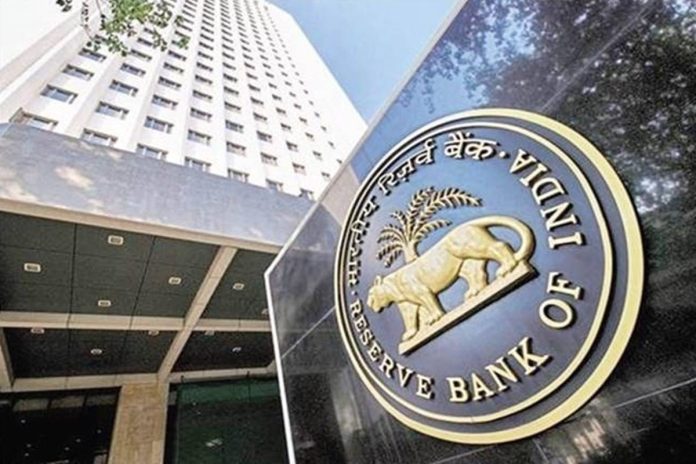India’s governance system is unique and equally intricate. With a population so large, and an economy so wide, it’s challenging for the union as well as state governments to look after everything. The government needs helping hands that can ensure the smooth functioning of certain departments and sectors in the country. Here come the government-established regulatory bodies.
What are these bodies?
These regulatory bodies direct, keep an eye and manage a variety of industries like banking, insurance, education, and healthcare. India has distinct regulatory bodies for each industry. Direct executive oversight may or may not apply to them. Food safety is overseen by the FSSAI, and market inflation is handled by the RBI. Additional examples of regulatory bodies are the Securities and Exchange Board of India (SEBI), the Competition Commission of India (CCI), the Small Industries Development Bank of India (SIDBI), etc. Let’s get to know about some of the important regulatory bodies in the country.
National Institution for Transforming India (NITI Aayog)
The term “NITI” in Sanskrit, which is translated as “Policy” in the present context, stands for morality, conduct, and guidance. It is the leading institution for formulating national policy and supporting the nation’s economic expansion. It aspires to build a powerful state that will aid in building a vibrant and powerful country. This aids India’s emergence as a significant global economy. Both the “Team India Hub” and the “Knowledge and Innovation Hub” are projects of the NITI Aayog.
Functions:
- To make sure that the national security interests are taken into account in economic strategy and policy, particularly in those areas that are specifically mentioned.
- It must pay close attention to the societal segments that might be in danger of receiving insufficient benefits from economic advancement.
- To build a common understanding of national development priorities, sectors, and strategies with the active participation of states in light of national objectives
National Bank for Agriculture and Rural Development (NABARD)
On July 12, 1982, the National Bank for Agriculture and Rural Development (NABARD) was founded with a paid-up capital of Rs. 100 crore and a 50:50 contribution from the Reserve Bank of India. It is the premier institution in the rural credit system for financing handicrafts, cottage and small-scale businesses, agriculture, and other related endeavours.
Functions:
- Act as the primary funding source for organizations that offer production and investment loans to support various rural development initiatives.
- Establishing institutions to improve the credit delivery system’s ability for absorption, including staff training, monitoring, the creation of rehabilitation plans, and the reorganization of credit institutions.
- In order to regularly ensure the growth of rural financing and farmers’ welfare, it also inspects and oversees cooperative banks and RRBs.
Securities and Exchange Board of India (SEBI)

The Government of India established the Securities and Exchange Board of India (SEBI) as a statutory regulatory agency in 1992 to oversee the Indian securities market and safeguard the interests of investors in securities.
Functions:
1. The following are duties carried out by SEBI as part of its protective duties:
•It detects pricing manipulation.
•Checks for Insider trading as it is prohibited.
•It forbids unfair and dishonest business activities.
2. The following role is one that SEBI plays as part of its regulatory responsibilities:
•It has created a set of guidelines, rules, and regulations to control brokers, underwriters, and other intermediaries.
•A company’s acquisition is likewise governed by SEBI.
•The activities of stockbrokers, trustees, merchant bankers, share transfer agents, and other parties connected to the stock exchange are governed and registered by it.
3. The following role is one that SEBI fulfills as part of its developmental responsibilities:
•It makes it easier for intermediaries to receive training.
•It strives to promote stock exchange activity by taking a strategy that is adaptable and flexible.
Comptroller and Auditor General of India (CAG)
According to the Indian Constitution, the Comptroller and Auditor General (CAG) is an independent body. It is a top authority in charge of auditing both internal and externally funded expenditures of the federal and state governments.
Functions:
- Examining the financial records of every expense that was paid for with money from the Consolidated Fund of India, the Consolidated Fund of each state, and each union territory with a Legislative Assembly.
- Audit of all expenditures from the Public Account and the Contingency Fund of India, as well as the State Public Accounts and Contingency Funds.
- Audits of all financial records, including balance sheets, profit and loss statements, and other subsidiary accounts, are maintained by any department of the federal government and state governments.
Union Public Service Commission (UPSC)
A permanent UPSC is required by Article 315 of the Indian Constitution (Union Public Service Commission). This organization holds exams to select candidates for various Indian Civil Services positions under the control of the Indian government. Articles 315 to 323 of the Indian Constitution deal with the selection of UPSC members as well as the commission’s duties and authority.
Functions:
•For several Indian states and union territories, the UPSC conducts examinations for All-India Services, Central Services, and Public Services.
•It aids the states in developing and putting into place integrated recruitment plans for any services that need specialized training.
•On the Governor’s request and with the President of India’s approval, the UPSC serves the interests of the State.
Reserve Bank of India (RBI)
The nation’s central bank is the Reserve Bank of India (RBI). A statutory entity, RBI is entrusted with the responsibility of controlling the flow of money into the country’s economy as well as issuing currency notes.
Functions:
•Notes are only printed by the Reserve Bank, which holds a monopoly in this regard. Except for the one rupee note, it is the only entity authorized to issue different denominations of currency notes (which is issued by the Ministry of Finance).
•Serving as a banker, agent, and advisor to the Indian government and the states is a crucial duty of RBI. It carries out all of the State and Central Government’s banking duties and offers the government helpful guidance on issues pertaining to economic and monetary policy. It also oversees the government’s public debt.
•The Reserve Bank provides the same services to the other commercial banks that those other banks typically provide to their clients. The country’s commercial banks are all lent money by the RBI.
The Board of Control for Cricket in India (BCCI)
The national governing organization for cricket in India is called the Board of Control for Cricket in India (BCCI). The board was established as a society in December 1928 and registered as such with the Tamil Nadu Societies Registration Act.
Functions:
•BCCI is responsible for choosing sponsorships for the cricket team, controlling IPL, deciding match/tournament’s venues, and the format in which India will compete, etc.
•Choose a representative for the International Cricket Council.
•To select the Indian Team’s manager and other team representatives.
Central Board of Film Certification (CBFC)
The government’s regulatory organization for the Indian film industry is called the Central Board of Film Certification (CBFC). The Cinematograph Act of 1952 established the CBFC, most commonly referred to as the Censor Board. Its objective is to confirm, by screening and rating, that documentaries, trailers, feature films, short films, and theatre-based advertising are appropriate for public viewing.
Functions:
•Increasing the accountability and transparency of the certification process.
•Through meetings and workshops, advisory panel members, the media, and filmmakers can be made aware of the certification requirements and the current film trend.
•By publishing yearly reports, responding to RTI requests, implementing e-governance, and making voluntary disclosures, CBFC may continue to be transparent about its operations.
There are more such regulatory bodies in India that specialize in various sectors and ensure their smooth functioning.































